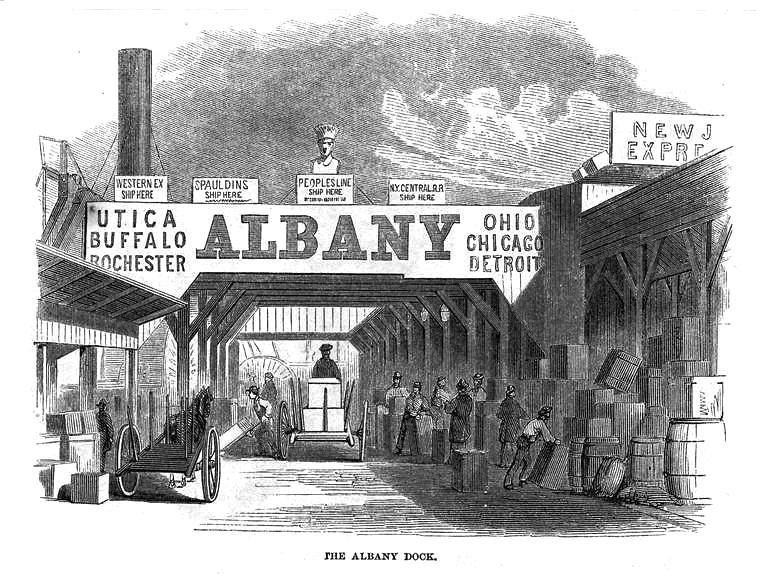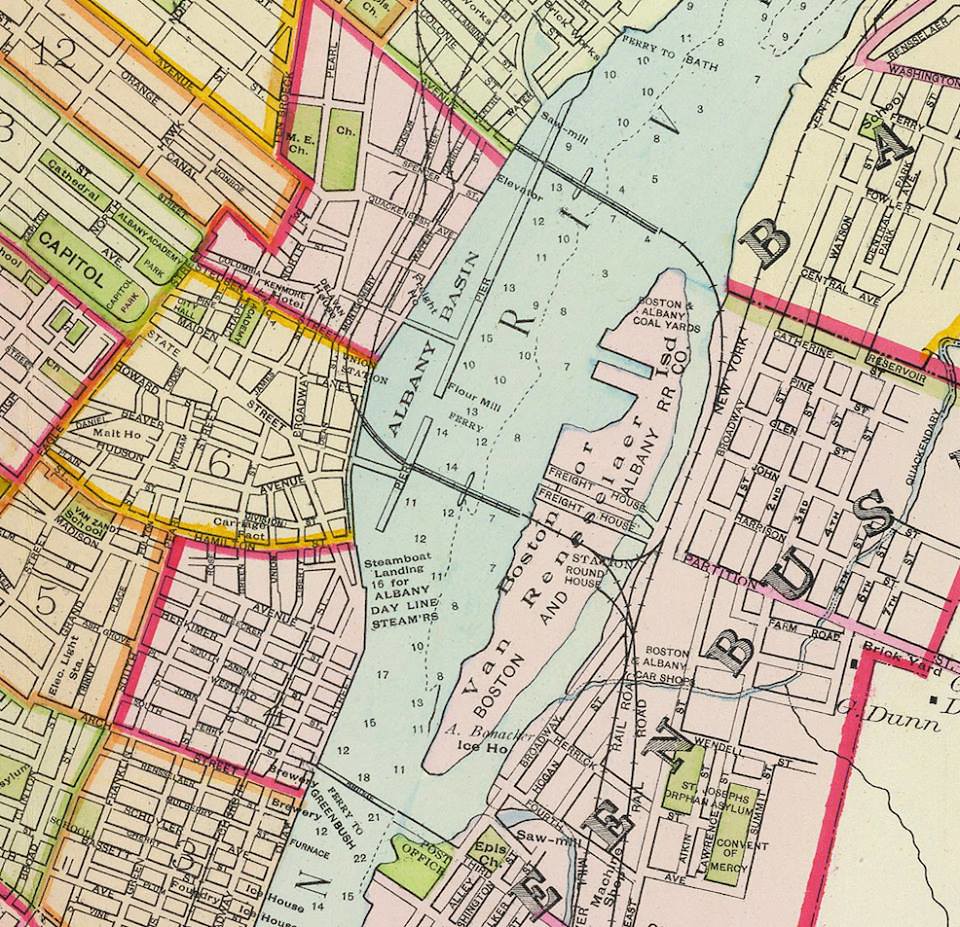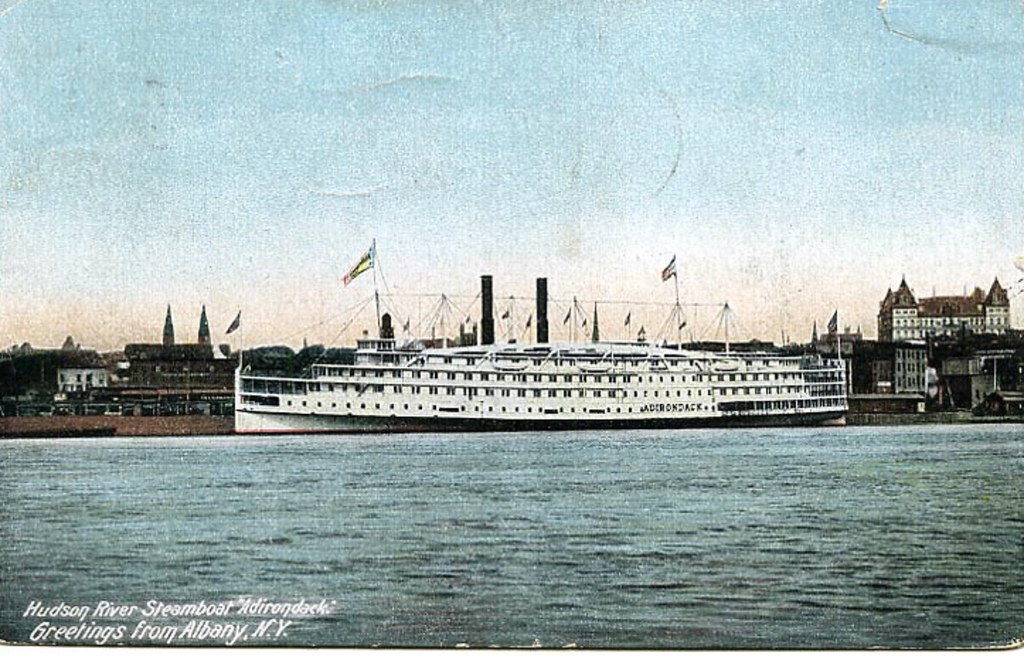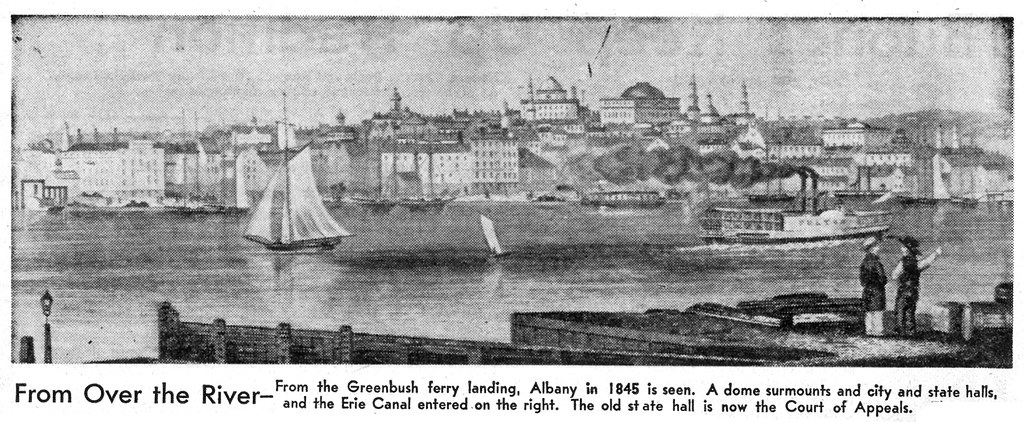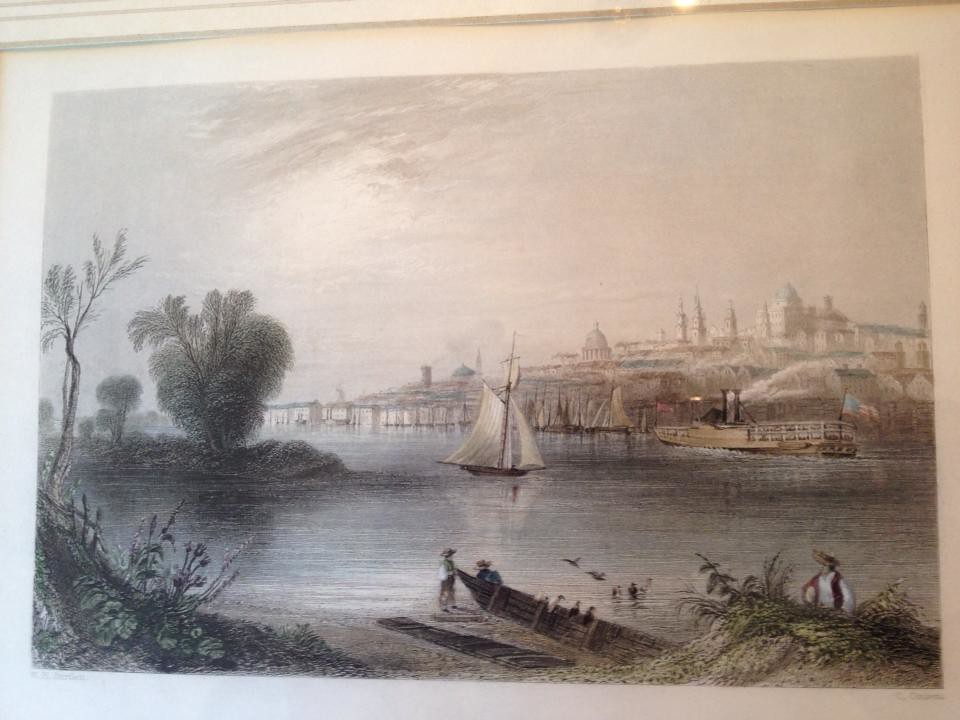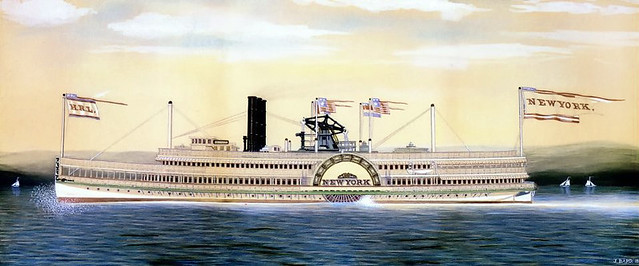The title of the data set is Albany Muster Rolls 8th Militia. This set includes important numeric and text information for 945 men who enlisted in the Albany 8th Militia between the years 1760-1762. Organized by first and last name; the remaining categories include the following: enlistment date, age, birth-place, trade, company, officer, stature (height), complexion, eye color, and hair color. A muster roll is an official list of enlisted soldiers in a military company–in this case the Albany 8th Militia. The information that goes into creating a muster roll has changed over time, but in its most general form it tells the reader who served. These types of documents are used across the board for all forms of military service. Different from a standing army, a militia is an armed group of civilian soldiers who’s work is intended to supplement the army (webster dictionary). The militia is also called into actions in times of emergency.
A large portion of this muster roll is physical characteristics; showing how it is a useful tool for identification purposes. Eye color, hair color, and age all give an idea of what a specific enlisted man may look like, and the labeling of complexion are in descriptive categories of appearance having categories that describe freckles, red patches, and acne scars along with skin tone. Along with how to identify an individual by looks, is which company they serve in and the skills or trade they use to assist in the actions of their company.
This data set has a wealth of information, but it is not without its faults. The company is frequently left blank, and for best results I focused on their commanding officer. The data also has misspellings and unfamiliar and unstandardized terms used.
When working with this data it is important to keep in mind subjectivity, this list was most likely created by the militias quartermaster. The data does not give us any information about this individual and how personal opinions may have impacted the way he collected and organized this data. It is possible that it altered the way he viewed race through complexion or valued certain trades over others. It is also unknown if the terms were standard across other Albany militias or unique to this specific quartermaster.
I had originally planned to create create a network visualization using the software Gephi. In order to prep the data to be used in Gephi I created a new spreadsheet organized by ‘source’ and ‘target’ This was a two column running list of repeating names with the coordinating age, trade, birthplace, complexion, and commanding officer to each name. Unfortunately, I ran into issues downloading the software as my MacBook Air was not compatible with older versions of Gephi. I also attempted to use Palladio and ran into similar issues. After giving up on Gephi, I attempted to clean the data using Open Refine. I specifically wanted to reorganize the way that the enlistment date was set up in the CSV. I again ran into technical issues in both editing and inputting my cleaned data. After a long struggle with computers, the internet, and my tolerance threshold for technological issues I began working with TableauPublic. In TableauPublic I cleaned my data. For birthplace I grouped to the best of my ability all of the enlisted men that were born in the Americas and separately grouped those born in regions like France, England, Ireland, and Germany. The intention was to get a sense of how many men were native-born and how many had immigrated. I did run into some difficulties and was unable to group places that I could not find on a modern map or through my research. I want to make it clear that because of that, my visualizations are a loose representation of the muster roll and not precise in terms of birthplace. Other sections that I grouped like trade were far more straight forward.
Highlighted in this first visualization is the ratio of native-born versus foreign-born men serving in the Albany 8th Militia.
The regions are listed on the left and the tallied number listed on the right. I also used the gradient of green colors on the numbers to display from which regions most of the men originally came from. Again, the challenge with this specific visualization are the number of birthplaces listed that are potentially areas of other countries that I was unable to locate using a map or through my research of mid-eighteenth century geography. The benefit of this visualization is the stark numbers that show the high population of Irish, German, and English born men serving in the Albany 8th Militia.
In my initial proposal for this project I had intended to look at the construction of race through the eyes of the quartermaster, but given the lack of standardized terms and no information about the quartermaster himself I was unable to. From working with the data, it seems as though the intention of the quartermaster to include complexion was for the purpose of a clear description of appearance and not a societal statement or class commentary. For example, the term ‘pock pitted’ which is used to describe a handful of individuals refers to an individual with acne or facial scars. Men were listed as ‘freckled’, another purely descriptive word for appearances. Some men are also listed as having red patches on their skin under the terms ‘ready, ruddy, reddy’ which does’t speak to their ethnicity or social class or any means to understand the complex construction of race. Even though it cannot answer my questions on race, it is interesting the tones and textures that this individual quartermaster made note of for the muster roll. The pie chart below shows the breakdown of complexion in this data set.
Just to be sure I wasn’t missing a racial or class component I made a text table showing the connection, or lack there of, between birthplace and complexion. As you can see there wasn’t a direct link to point to racial construction based on location of birth.
Not only can we not discuss the constructs of race, but there is also no connection to say that men of different skin tones were separated into different companies. To prove this I created another text table showing how difference complexions were dispersed throughout the militia.
Moving away from the complexion component, I wanted to focus on questions that the data could answer. One of which was: What trades were important to the Albany 8th Militia? Laborer was the overall most used term under the category of trade which seemed rather vague. In order to look at more specific skills I intentionally hid that information and created packed bubble visualization of the other trades. The size of the bubble shows the amount of individuals listed under that trade.
I then wanted to see how these trades were dispersed among the militia in order to see if there was a pattern or if it was at random. Using the packed bubble visualization for trade I looked at the most popular trades listed: tailor, carpenter, weaver, cordwinder, baker, butcher, shoemaker among others. I then made another packed bubble visualization showing how many militiamen each commanding officer had. That visualization is below.
I could now look at the largest companies based on how many enlisted men were under the command of a specific officer. Given this information I then created a text table showing what trades were listed under the four largest companies of the Albany 8th Militia.
What this shows, is that for a militia company to run as intended they need the men of that company must be equiped with some specific skills. The men had to create and maintain their resources. It was vital to the militia to have individuals to create and repair clothes and shoes. Another necessity was feeding the militia, so each company had butchers and bakers. What is interesting are the jobs that not all four of the largest companies have; all but one of the largest companies had sailors. Captain Baine who has the second largest group of enlisted men under his command was not supplied with seamen, which may point to the skills of that captain or location of that company. It is possible that they were knowingly landlocked in their movements and that sailors would be most useful serving under another officer.
As my interest in trade peaked, I went on to look at the relationship between trade and birthplace to see if there were any connections of what type of skills came from which regions of the world. This time I included the largest category of laborers in the visualization. Using a text table with birthplace on the left and trade listed on the right, I used colored blocks to symbolize the amount by size of men with each trade. Other than laborers which nearly every region provided it was interesting to see that the men of the Albany 8th Militia that were born in the colonies were cord winders, carpenters, and blacksmiths. Men from Germany were often bakers and butchers. Ireland provided weavers and tailors. There is a significant amount of overlap of types of jobs coming from different countries but it is significant to see the variety.
The biggest take-away from the research and work done with the Albany 8th Militia data set are the importance of skilled tradesmen to the militia effort, and that importance was clearly recognized by the quartermaster who collected this data. Intentionally men with different skills were strategically placed in companies that would benefit. Where the placement of skilled workers seems deliberate, the terms and placement of men based on birthplace or complexion seem at random. Again, despite my initial research questions, I found that there wasn’t a clear connection between complexion and trade, complexion and birth place, or complexion and company. Due to these findings, I focused primarily on creating visuals to represent the make up of the militia and specifically the largest companies focusing on trade, complexion, and birthplace. It shows the diversity of the companies and the importance of dividing skills amongst the companies to ensure that each group has men skilled in different areas. For example all of the largest companies have tailors, bakers, and blacksmiths. I found it interesting that the quartermaster was clearly tedious and specific in gathering individuals trade information and less structured with other topics, i.e. complexion.
Working with this muster roll I felt like I knew who these men were, what they looked like, and the jobs they performed in the militia. I wanted to build a context of history and look into why they came to the Albany area and why these men enlisted. My outside research looked at the time period and conditions of Albany in the mid eighteenth century. The geographical location of Albany gave the city importance, being on both the Hudson and Mohawk Rivers it was an important region for trade and communication within the area and most notably with New York City. My outside research goes back before the enlistment date of the men of the Albany 8th Militia in order to understand the climate of the time. In 1753 colonial leaders began to recognize that the colonies needed their own military and political organizations and talks began about uniting the colonies in support of one another. This would be in stark contrast from their position relying on British forces for protection against French and their Native American allies. These types of discreet discussions were held in meeting houses around the colonies and were brought to the general publics attention during the Albany Congress of 1754 and creation of the Albany Plan of Union. The Albany Plan of Union, developed by Benjamin Franklin, was brought to the Albany Congress on July 10th, 1754 in front of representatives from many of the Thirteen Colonies. Unification of the colonies in against military threats were in the foremost minds of colonial leaders due to the direct impacts seen by the French and Indian War. This plan and the beginnings of war on the North American front were turing points for the history of the Thirteen Colonies, but for Albany especially due to its location in the north. In 1755, militias were being formed in Albany to march on the French fort in Crown Point by Lake Champlain. The local militias were supplemental to the British army, but still incredibly important to the war effort. During this time militias had large number of men who worked the land forcing marches north to wait until after the spring planting season. Waiting until late spring was beneficial for argiculture and it also allowed militia men to travel with more ease avoiding the snowy and muddy roads of late winter and early spring. The muster roll for the Albany 8th militia shows that between the years of enlistment all of the men enlisted during the spring months of 1760-1762. Most of those men’s trades were not specified as farmers, it is likely that their work was still impacted by the planting and harvesting seasons. Undoubtably agriculture was vital for the whole of the Albany community as they relied on steady access to resources for the community, militias, and British troops quartered in the city.
During the throes of the French and Indian War, Albany with its fortifications and hospital would see the population grow with troops, displaced refugees, and wartime survivors migrating into the region. Albany became a headquarters for the British and meeting grounds for their troops and supplemental local militias to convene before marching north on the French. Albany was also a supply port for these groups moving goods and information down the rivers. Supplies moved through Albany to forts in Lake George and Oswego. For soldiers that fell wounded or ill, Albany had the best access to medical treatment in the region. Between the war efforts and an influx of individuals moving closer to the protection of the area, the service industry grew and began to alter the local economy. The war grew an industry and Albany became a hub of activity and strategy. After a massacre in Lake George, when Fort William Henry fell, William Pitt helped to form the largest army of its time in North America to assemble in Albany. Everyones lives in the region would be touched by the war, and joining the fight was heavily encouraged. Any man living in Albany during the French and Indian War would feel this pressure. In 1759, the French were defeated and their Iroquois allies lost some political standing in the region. After the victories at Ticonderoga and Crown Point, French troops were mostly pushed out of the Albany region and fighting dwindled down to a halt. Overall the colonists of Albany saw themselves as English and a local effort was made to integrate the prevalent Dutch and English cultures. Despite this cultural attachment, local colonists grew weary of the power British troops had gained. Quartered and stationed throughout Albany, there were clearly connections between the troops and civilians living in the region. In this postwar period, one can assume the colonists were happy to be free of the French threat but also increasingly aware of a building tension between the British troops and colonists. Restrictions and taxations were placed on colonists by the British crown and enforced by troops, and unlike other foreign threats, this was embedded among them.
The experiences of the French and Indian War for Albany was altering for the region, and especially for its militia men. These citizen soldiers would be organizing and training themselves for a revolution on the horizon that they may have not seen coming. During these years they gained military experience and local leaders that would help build up the foundation of the Albany region. The French and Indian War also changed the economic climate with an increased service industry and increased trade. The political and official end of the war was seen in 1763 when the Treaty of Paris was signed, but it was only two short years later that the Stamp Act was introduced to the colonies and the rumblings of revolution were well underway. From the 1754 Albany Plan of Union through the Stamp Act of 1765, the men of Albany’s 8th Militia lived in a world with military and political tensions.
Bielinski, Stefan. “Who Fought the War.” Who Fought the War. September 10, 2001. Accessed May 07, 2016. http://exhibitions.nysm.nysed.gov//albany/or/or-fw.html.
Opalka, Anthony. “Albany: One of America’s First Cities.” One of America’s First Cities: Colonial Albany – Oldest US Museums. Accessed May 07, 2016. http://www.albanyinstitute.org/albany-one-of-americas-first-cities.html.
McEneny, John J., Dennis Holzman, and Robert W. Arnold. Albany, Capital City on the Hudson: An Illustrated History. Sun Valley, CA: American Historical Press, 1998.
